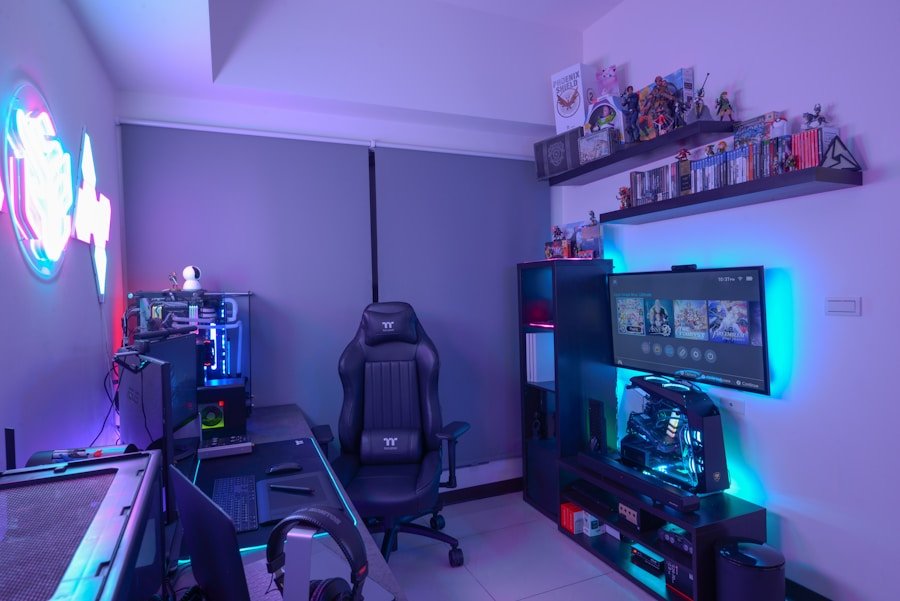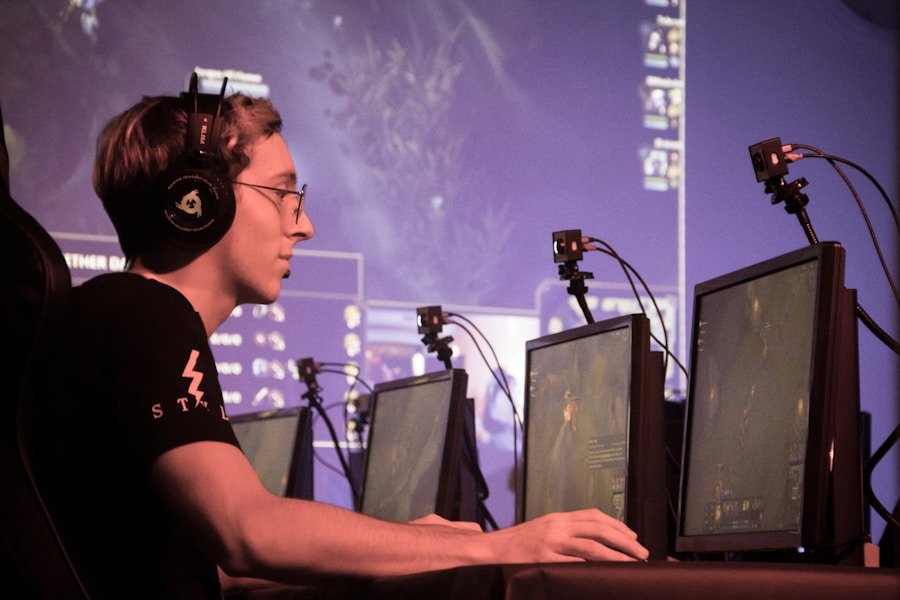Now Reading: The Battle of Livestreaming: Twitch vs YouTube Gaming
-
01
The Battle of Livestreaming: Twitch vs YouTube Gaming
The Battle of Livestreaming: Twitch vs YouTube Gaming

In recent years, livestreaming has transformed the way we consume content, creating a dynamic and interactive experience that engages audiences in real-time. As someone who has navigated the digital landscape, I have witnessed the rise of various livestreaming platforms that cater to diverse interests, from gaming to music and beyond. These platforms have not only changed how creators share their passions but have also redefined the relationship between content creators and their audiences.
The immediacy of livestreaming allows for a unique connection, fostering communities that thrive on interaction and shared experiences. Livestreaming platforms have become essential tools for creators looking to reach wider audiences. They offer a space where individuals can showcase their talents, share their knowledge, or simply entertain.
As I explore the intricacies of these platforms, I find it fascinating how they have evolved to meet the demands of both creators and viewers. The ability to engage with an audience in real-time, respond to comments, and create a sense of community has made livestreaming a powerful medium in the digital age.
Key Takeaways
- Livestreaming platforms have become increasingly popular for gamers and content creators to connect with their audience in real-time.
- Twitch and YouTube Gaming have both played significant roles in the history and development of livestreaming, with Twitch initially focusing on gaming content and YouTube Gaming later entering the market.
- Twitch offers features such as live chat, emotes, and channel points, while YouTube Gaming provides features like Super Chat, sponsorships, and live polls.
- YouTube Gaming stands out with its integration with the larger YouTube platform, while Twitch offers a more immersive and interactive experience for viewers.
- Streamers on both Twitch and YouTube Gaming have various monetization opportunities, including subscriptions, donations, ad revenue, and sponsorships, but the community and culture differ between the two platforms.
History and Development of Twitch and YouTube Gaming
Twitch, which began as a spin-off of the general streaming platform Justin.tv in 2011, quickly carved out its niche in the gaming community. I remember when it first launched; it was a revelation for gamers who wanted to share their gameplay experiences with others. The platform’s focus on live streaming allowed gamers to connect with their audiences in ways that pre-recorded videos simply could not achieve.
YouTube Gaming, on the other hand, emerged as a response to the growing popularity of gaming content on YouTube itself. Launched in 2015, it aimed to create a dedicated space for gamers to stream and watch gameplay.
While YouTube had already established itself as a video-sharing giant, I found it intriguing how they sought to capture the live streaming market as well. Despite its initial struggles to compete with Twitch’s established user base, YouTube Gaming has since integrated livestreaming into its main platform, allowing creators to reach their audiences through both live and recorded content seamlessly.
Features and Functionality of Twitch

Twitch is renowned for its robust features tailored specifically for gamers and content creators. One of the standout functionalities is its chat system, which allows viewers to interact with streamers in real-time. As I’ve experienced firsthand, this creates an engaging atmosphere where viewers feel like they are part of the action.
Streamers can respond to comments and questions on the fly, fostering a sense of community that is hard to replicate elsewhere. Additionally, Twitch offers various tools for streamers, such as overlays and alerts that enhance the viewing experience. Another significant feature of Twitch is its subscription model.
Viewers can subscribe to their favorite channels for a monthly fee, providing streamers with a steady income while offering subscribers exclusive perks like ad-free viewing and access to special emotes. This model has encouraged many creators to invest time and effort into their channels, knowing they can earn revenue directly from their most dedicated fans. Furthermore, Twitch’s integration with Amazon Prime allows Prime members to subscribe to one channel for free each month, further incentivizing viewers to engage with the platform.
Features and Functionality of YouTube Gaming
YouTube Gaming offers a different set of features that cater to both live streaming and traditional video content. One of its most notable functionalities is the ability to seamlessly switch between live streams and pre-recorded videos on a single channel. This flexibility allows creators like me to diversify our content offerings without needing separate platforms or channels.
The platform also boasts an extensive library of gaming-related videos, making it easy for viewers to discover new content or catch up on streams they may have missed. Another appealing aspect of YouTube Gaming is its monetization options. Creators can earn revenue through ads on their videos, channel memberships, and Super Chats during live streams.
This variety provides multiple avenues for income generation, which is particularly beneficial for those looking to make a career out of gaming content creation. Additionally, YouTube’s algorithm promotes discoverability, meaning that even smaller channels can gain traction if their content resonates with viewers. This potential for growth is something I find particularly motivating as a creator.
Comparison of User Experience on Twitch and YouTube Gaming
When comparing user experiences on Twitch and YouTube Gaming, I find that each platform offers distinct advantages that cater to different preferences. Twitch excels in creating an immersive live experience where interaction is at the forefront. The chat feature is vibrant and fast-paced, allowing for real-time engagement that keeps viewers coming back for more.
As someone who enjoys participating in live chats during streams, I appreciate how Twitch fosters a sense of immediacy and connection between streamers and their audiences. Conversely, YouTube Gaming provides a more versatile experience by allowing users to access both live streams and recorded content in one place. This flexibility means that if I miss a live event, I can easily catch up later without feeling disconnected from the community.
Additionally, YouTube’s recommendation algorithm often surfaces content that aligns with my interests, making it easier for me to discover new creators and streams. While Twitch may offer a more focused live experience, YouTube Gaming’s versatility appeals to those who enjoy consuming content in various formats.
Monetization and Revenue Opportunities for Streamers on Twitch and YouTube Gaming

Building a Loyal Subscriber Base
As I’ve learned from fellow creators, building a loyal subscriber base is essential for generating consistent income on the platform. The ability to interact with fans during streams often leads to increased support through donations and subscriptions.
YouTube Gaming Monetization Opportunities
YouTube Gaming offers its own set of monetization opportunities that can be equally lucrative. Creators can earn revenue through ad placements on their videos, channel memberships that provide exclusive perks to subscribers, and Super Chats during live streams where viewers pay to have their messages highlighted.
Diversifying Income Streams
This variety allows streamers like me to diversify our income streams and explore different ways to engage with our audiences financially. The potential for ad revenue on recorded videos can also provide a more stable income compared to relying solely on live donations.
Community and Culture on Twitch vs YouTube Gaming
The communities that form around Twitch and YouTube Gaming are distinct yet share some similarities rooted in gaming culture. On Twitch, I’ve noticed a strong emphasis on community engagement during live streams. Streamers often cultivate tight-knit communities where viewers feel like they belong.
The use of emotes and inside jokes creates an atmosphere that fosters camaraderie among fans. This sense of belonging is one of the reasons why many viewers return regularly; they are not just watching a stream but participating in a shared experience. In contrast, YouTube Gaming tends to attract a broader audience due to its integration with the larger YouTube platform.
While there are certainly communities within specific channels, the culture can feel less intimate compared to Twitch’s dedicated fanbases. However, this diversity allows for a wider range of content creators and styles, appealing to various interests beyond just gaming. As someone who enjoys exploring different types of content, I appreciate how YouTube Gaming encourages experimentation and innovation among creators.
The Future of Livestreaming: Potential Trends and Innovations
As I look ahead at the future of livestreaming, I am excited about the potential trends and innovations that could shape this dynamic landscape. One trend I foresee is the continued integration of augmented reality (AR) and virtual reality (VR) technologies into livestreaming experiences. These advancements could create immersive environments where viewers feel like they are part of the action rather than just passive observers.
Imagine attending a virtual concert or gaming event where you can interact with other fans in real-time; this could revolutionize how we experience live content. Another potential innovation lies in enhanced monetization strategies that could benefit both creators and platforms alike. As competition between platforms intensifies, we may see new revenue-sharing models that empower streamers while providing platforms with sustainable income sources.
Additionally, as brands increasingly recognize the value of influencer marketing within livestreaming contexts, we might witness more partnerships that create unique opportunities for creators to collaborate with companies in innovative ways. In conclusion, livestreaming platforms like Twitch and YouTube Gaming have transformed how we engage with content in the digital age. Each platform offers unique features and functionalities that cater to different preferences while fostering vibrant communities around shared interests.
As I continue my journey as a creator within this evolving landscape, I am eager to see how these platforms will adapt and innovate in response to changing viewer expectations and technological advancements.
If you’re looking to gain a competitive advantage in your gaming experience, you may want to check out this article on optimizing field of view (FOV). Understanding how to adjust your FOV settings can give you an edge in competitive gameplay.

























